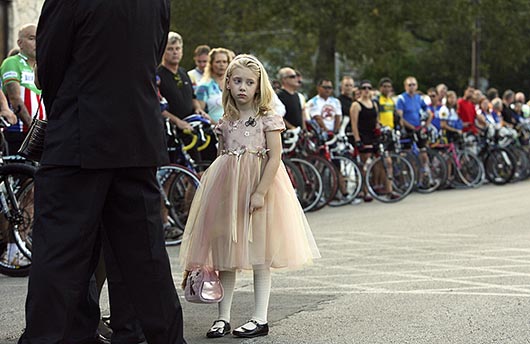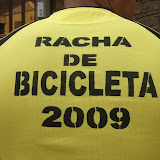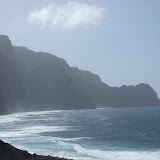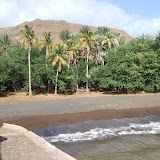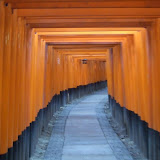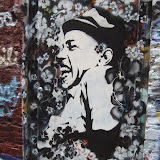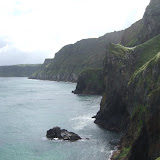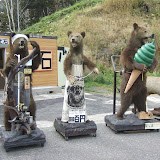http://www.latimes.com/news/opinion/la-ed-methane15oct15,0,1365993.story?coll=la-tot-opinion&track=ntothtml Killer cow emissions
LA TIMES OPINION
Livestock are a leading source of greenhouse gases. Why isn't anyone raising
a stink?
October 15, 2007
It's a silent but deadly source of greenhouse gases that contributes more to
global warming than the entire world transportation sector, yet politicians
almost never discuss it, and environmental lobbyists and other green activist
groups seem unaware of its existence.
That may be because it's tough to take cow flatulence seriously. But livestock
emissions are no joke.
Most of the national debate about global warming centers on carbon dioxide, the
world's most abundant greenhouse gas, and its major sources -- fossil fuels.
Seldom mentioned is that cows and other ruminants, such as sheep and goats, are
walking gas factories that take in fodder and put out methane and nitrous
oxide, two greenhouse gases that are far more efficient at trapping heat than
carbon dioxide. Methane, with 21 times the warming potential of CO2, comes from
both ends of a cow, but mostly the front. Frat boys have nothing on bovines, as
it's estimated that a single cow can belch out anywhere from 25 to 130 gallons
of methane a day.
It isn't just the gas they pass that makes livestock troublesome. A report from
the United Nations Food and Agriculture Organization identified livestock as
one of the two or three top contributors to the world's most serious
environmental problems, including water pollution and species loss. In terms of
climate change, livestock are a threat not only because of the gases coming
from their stomachs and manure but because of deforestation, as land is cleared
to make way for pastures, and the amount of energy needed to produce the crops
that feed the animals.
All told, livestock are responsible for 18% of greenhouse-gas emissions
worldwide, according to the U.N. -- more than all the planes, trains and
automobiles on the planet. And it's going to get a lot worse. As living
standards rise in the developing world, so does its fondness for meat and
dairy. Annual per-capita meat consumption in developing countries doubled from
31 pounds in 1980 to 62 pounds in 2002, according to the Food and Agriculture
Organization, which expects global meat production to more than double by
2050. That means the environmental damage of ranching would have to be cut in
half just to keep emissions at their current, dangerous level.
It isn't enough to improve mileage standards or crack down on diesel truck
emissions, as politicians at both the state and national levels are working to
do. Eventually, the United States and other countries are going to have to
clean up their agricultural practices, while consumers can do their part by
cutting back on red meat.
Manure, methane and McGovern
In a Web forum for presidential candidates in September, TV talk-show host Bill
Maher asked former Sen. John Edwards a snarky question: Because Edwards had
suggested that people trade in their SUVs to benefit the environment, and
cattle generate more greenhouse gases than SUVs, "You want to take a shot at
meat?" Maher asked.
Edwards wisely dodged the question. It is extremely hazardous for politicians
to take on the U.S. beef industry, a lesson learned by Sen. George McGovern in
the late 1970s when his Select Committee on Nutrition dared to recommend that
Americans cut down on red meat and fatty dairy products for health reasons.
After a ferocious lobbying blitz from meat and dairy interests, the committee
rewrote its guidelines to suggest diners simply choose lean meats that "will
reduce saturated fat intake." McGovern was voted out of office in 1980, in part
because of opposition from cattlemen in his home state of South Dakota.
Beyond the dangers of taking on the beef bloc, legislating food choices is an
unpopular and nearly impossible task, so it's unlikely any candidate will
endorse a national vegetarian movement to fight global warming any time soon.
There are other approaches, though.
Cows and other ruminants have four stomachs, the first of which, called the
rumen, is where the trouble lies; bacteria in the rumen produce methane.
Scientists -- mostly in Australia, New Zealand and Britain, where the problem
is taken a lot more seriously than it is here -- are working on a variety of
technical solutions, including a kind of bovine Alka-Seltzer. Scientists are
also trying to develop new varieties of feed grasses that are more energy
efficient and thus generate less methane, and they are experimenting with
targeted breeding to produce a less-gassy strain of cattle.
But it's not just about the belching. Livestock manure also emits methane
(especially when it's stored in lagoons) and nitrous oxide, better known as
laughing gas. There's nothing funny about this gas: It has 296 times the
warming potential of carbon dioxide, and livestock are its leading
anthropogenic (human-caused) source. The best way to reduce these gases is to
better manage the manure; storage methods and temperature can make a big
difference. The California Air Resources Board is studying manure-management
practices as part of a sweeping effort to identify ways of cutting
greenhouse-gas emissions, work that by the end of next year might lead to
regulation of the state's ranches and dairies. Other states should do the same.
There are also smart ways of treating or converting animal waste. Manure
lagoons can be covered, capturing gases that can be used to generate power or
simply be burned away (burning the gases converts most of the emissions to CO2,
which is far less destructive than methane). That's the strategy being pursued
by American Electric Power Co., a gigantic utility based in Columbus, Ohio,
whose coal-fired power plants make it the nation's biggest emitter of carbon
dioxide. This summer, the company began putting tarps on waste lagoons at farms
and ranches and sending the gases they capture to flares.
American Electric is under heavy regulatory pressure. Last week, it was on the
wrong end of the biggest environmental settlement in U.S. history and agreed to
spend up to $4.6 billion to clean up its smokestacks. Its work on manure is
part of an experiment in carbon offsets; the company anticipates that someday
Congress will cap the amount of carbon dioxide that can be emitted and allow
polluters to trade pollution credits. As a previous installment of this series
noted, that's a less effective way to combat global warming than carbon taxes,
but the American Electric example shows that it would also direct the economic
might of industrial polluters toward solving off-the-beaten-path problems such
as livestock waste.
Other possible solutions include providing more aid to ranchers in places like
Brazil, where forests are rapidly disappearing, to make cattle operations more
efficient and thus decrease the need to cut down trees. Changes in farming
practices on fields used to grow livestock feed could help capture more carbon.
And U.S. agricultural policy is overdue for changes. Subsidies on crops such as
corn and soybeans have traditionally kept the price of meat artificially low
because these are key feedstocks.
Broccoli: It's what's for dinner
Such policy shifts and new technologies would help, but probably not enough. A
recent report in the Lancet led by Australian National University professor
Anthony J. McMichael posits that available technologies applied universally
could reduce non-carbon dioxide emissions from livestock by less than 20%. The
authors advocate another, fringe approach that has long been embraced by
dietitians and vegans but is a long way from going mainstream in the United
States: eating less meat.
Americans love beef. According to the 2000 census, the U.S. ranks No. 3 in the
world in per-capita consumption of beef and veal (after Argentina and Uruguay),
gorging on 100 pounds per year. We're also among the leaders in obesity, heart
disease and colorectal cancer, and there is a connection -- fatty red meat has
been linked to all of these conditions.
McMichael's idea isn't likely to gain much traction outside Australia; he
proposes that developed countries lower their daily intake of meat from about
250 grams to 90 grams, with no more than 50 grams coming from ruminant animals
-- that's less than 2 ounces, or half a McDonald's Quarter-Pounder.
Still, as evidence mounts that cutting back on beef would both improve our
health and help stave off global warming, a campaign urging people to do so is
clearly in order. It's understandable why political candidates are wary of
bashing beef, but less understandable why environmental leaders with nothing to
lose are reluctant to raise the issue. They would be more credible in targeting
polluters if they were equally assertive in pointing out what all Americans can
do to fight global warming, and at the very top of that list -- way ahead of
more commonly mentioned approaches such as buying fluorescent lightbulbs or
energy-efficient appliances -- would be eating less red meat.
A University of Chicago study examined the average American diet and found
that all the various energy inputs and livestock emissions involved in its
production pump an extra 1.5 tons of CO2 into the air over the course of a
year, which would be avoided by a vegetarian diet. Thus, the researchers found,
cutting out meat would do more to reduce greenhouse gas emissions than trading
in a gas guzzler for a hybrid car.
The U.S. Department of Agriculture assesses ranchers, dairymen and producers of
other commodities to pay for marketing campaigns to promote their products,
raising millions of dollars a year and turning such slogans as "Got Milk?" and
"Beef: It's What's for Dinner" into national catchphrases. This isn't quite
tantamount to a government-mandated campaign to promote cigarette smoking, but
it's close. The government should not only get out of the business of promoting
unhealthful and environmentally destructive foods, it should be actively
discouraging them.



